|
The site
is a low lying area, like a scree basin for the surrounding low
hills. We found this site by seeing from the road lots of cherts
laying on the ground and investigated. That was over a decade
ago, and each time we go north from the Canyon in search of fall
colors, we visit this site. Look closely for Dawn, dressed in
red in the center.
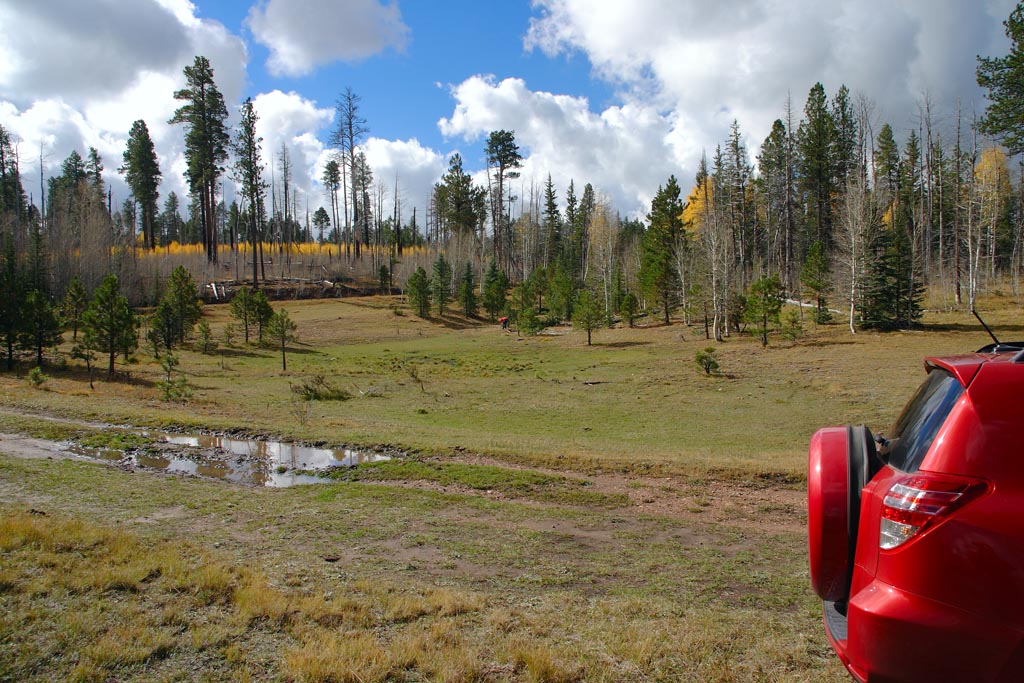
This big open field
is filled with many beds of cherts scattered amongst the grass
clumps. Those camp fire sites in the center are built with highly
fossiliferous rocks!
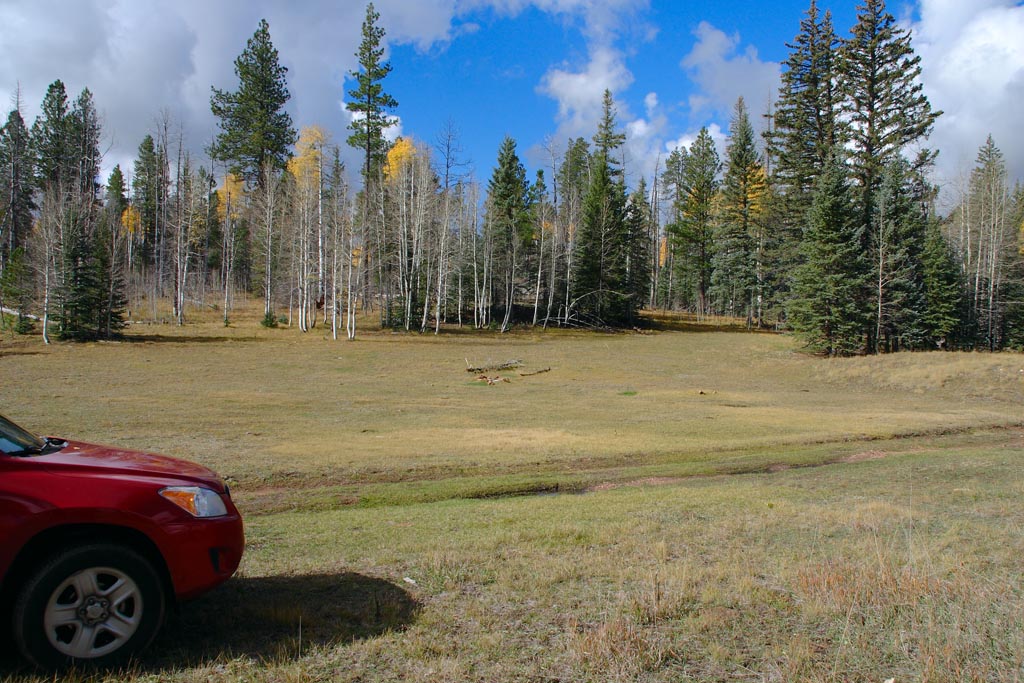
Surrounding the
field are many trees with hordes of cherts. You can see them
here as white and pink covering the ground. They are loaded with
fossils.

Here I am searching
for better fossils than what Dawn usually finds. She always wins...

Fossil
images:
A magnificent specimen
of a productid brachiopod with ORIGINAL coloration patterns.
We have never seen this before any where in the formation. This
fossil is 280 million years old.

From the limestone
hills, the slabs of rock were filled with hordes of fossils that
were silicified. Preservation however was not the best.
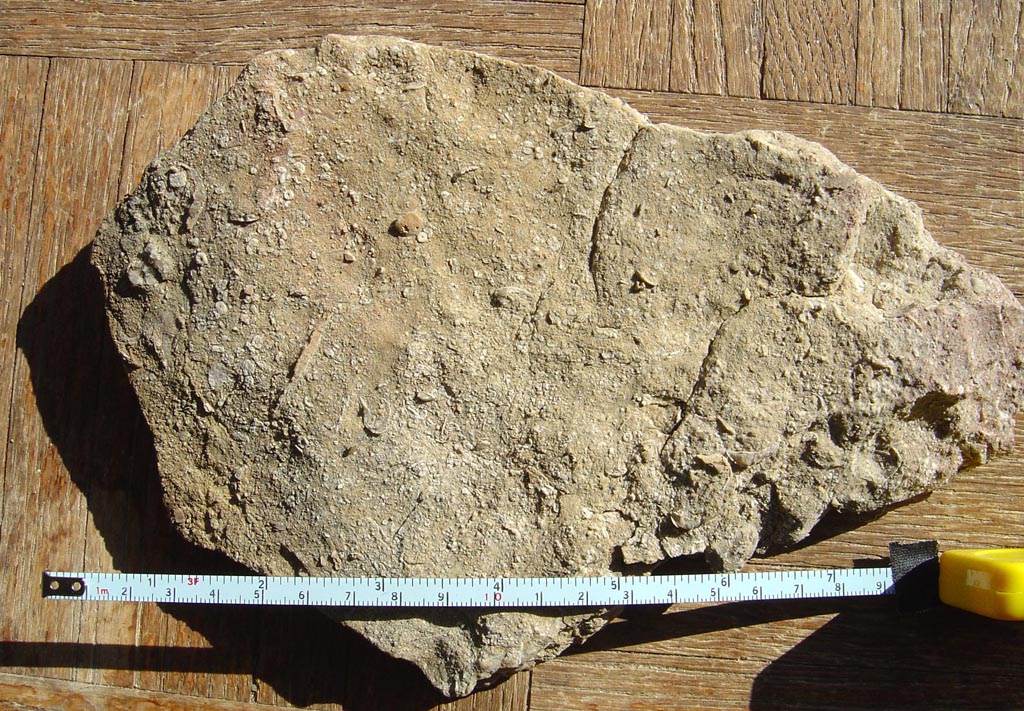
Here is the one
really killer fossil I found - a Pectin Mollusk with one wing
still attached at the bottom.
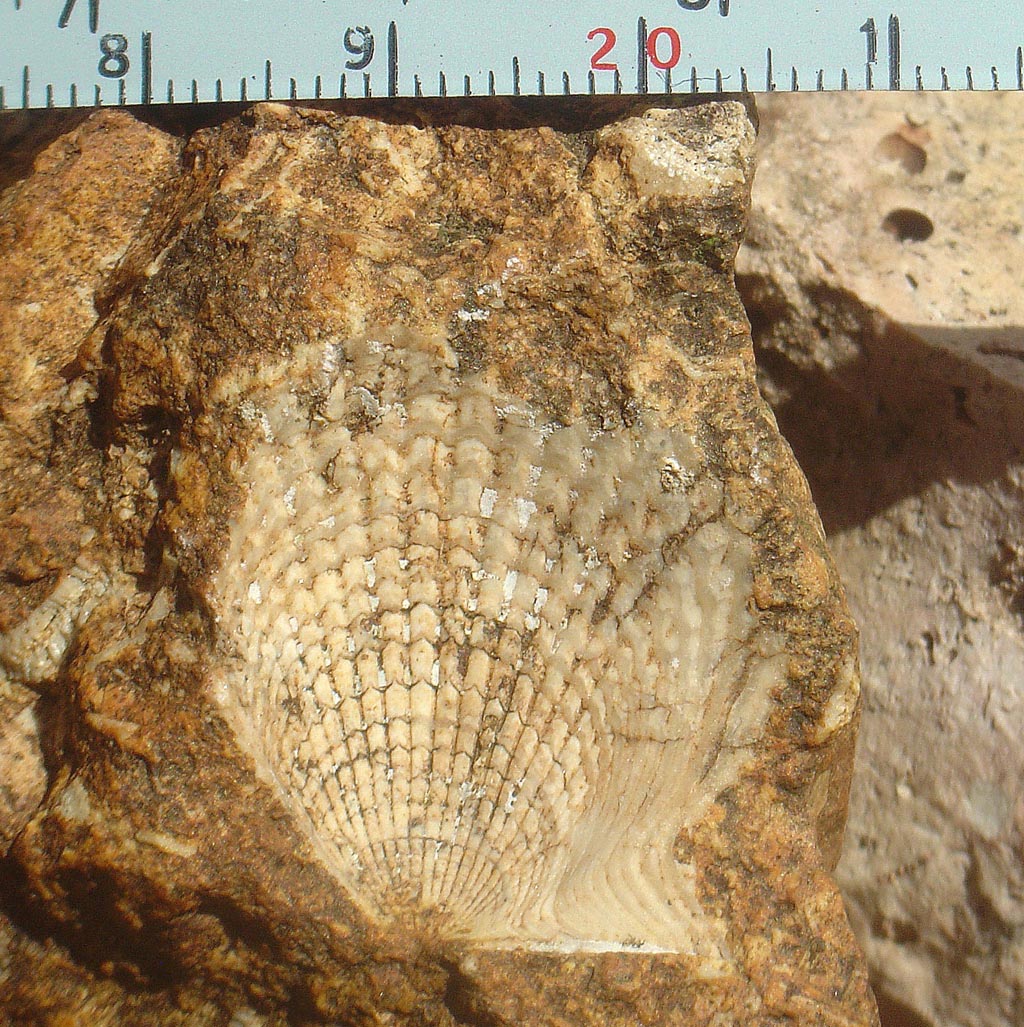
Here is a moderate
sized productid brachiopod that was loose in the gravel.
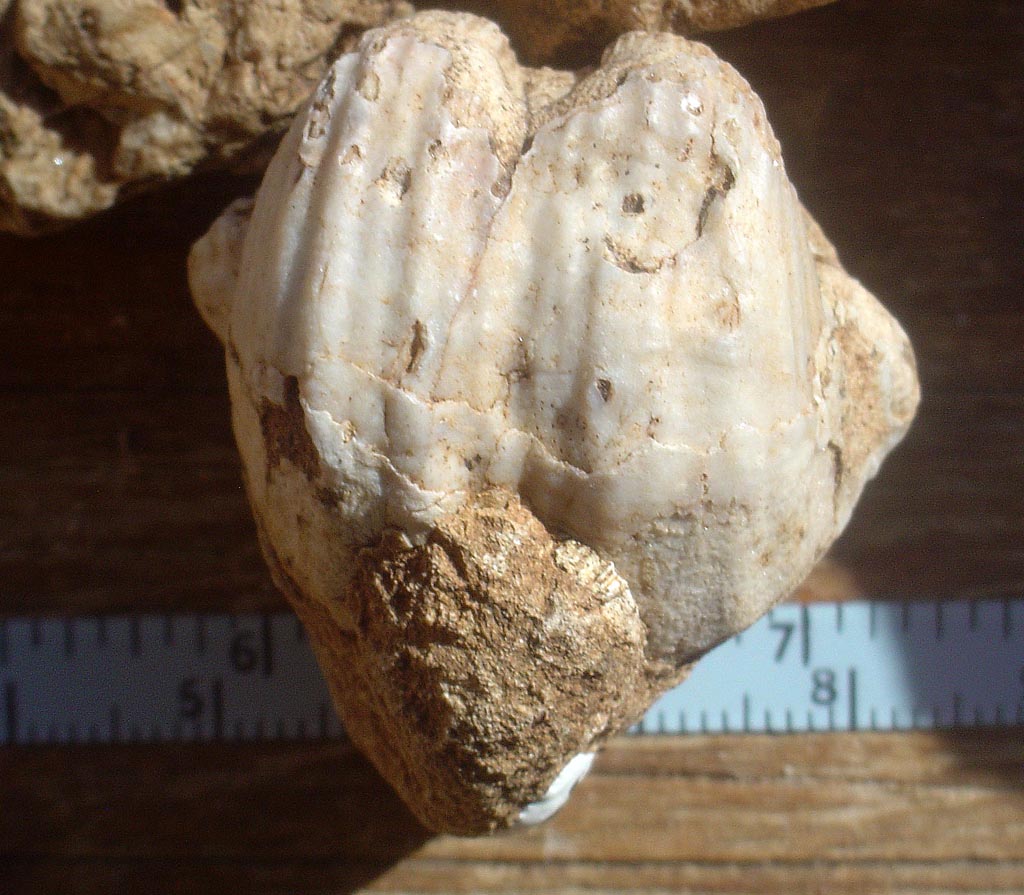
Fenestellid bryozoan
in white creamy chert
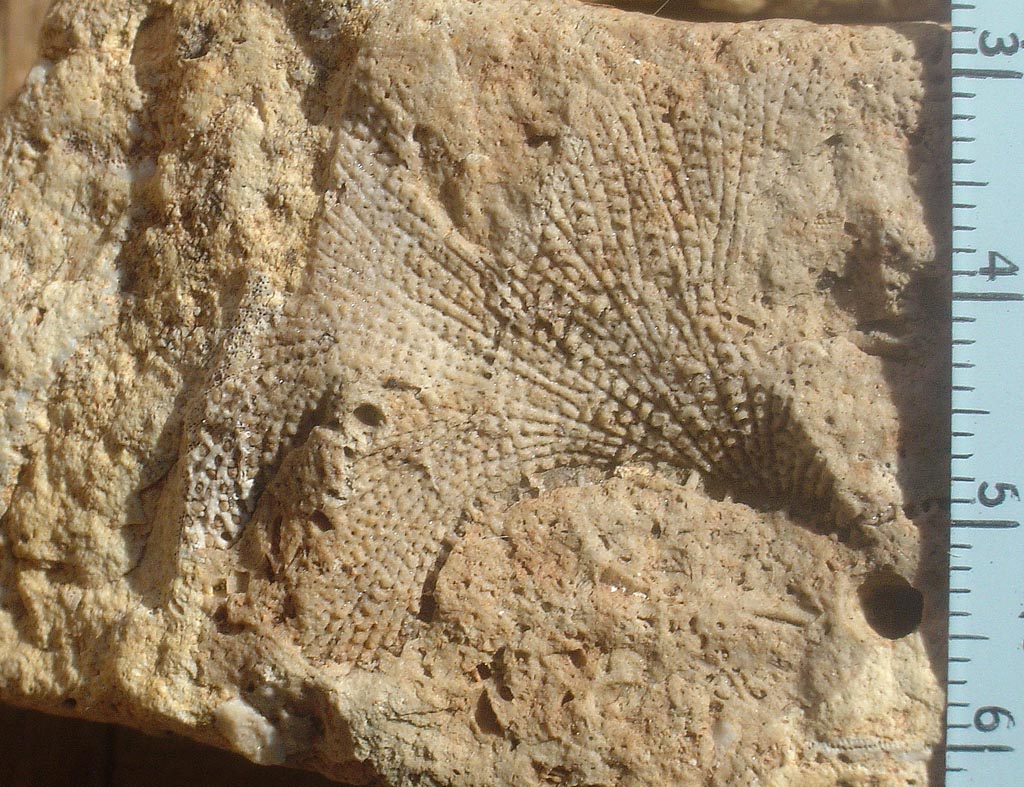
Most of the cherts
in the field looked like this - loaded with crinoid and urchin
material as molds.
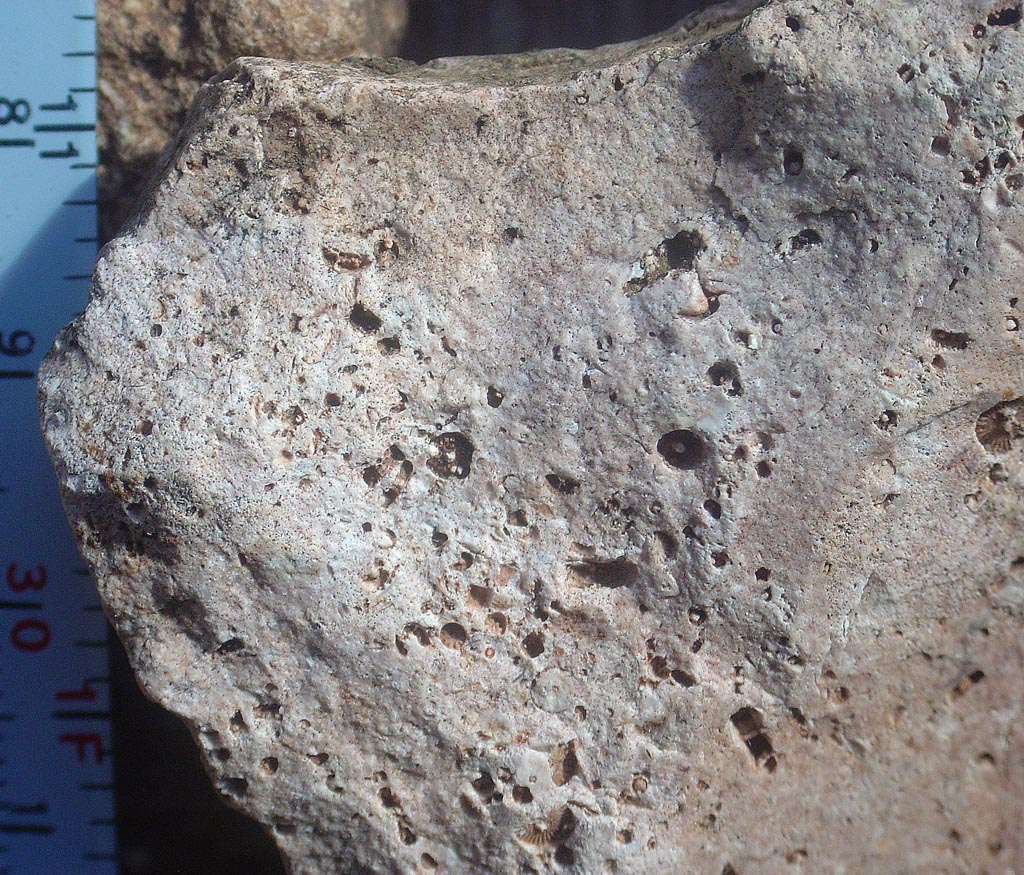
Hexactanellid sponge
is the mottled pattern you see here.
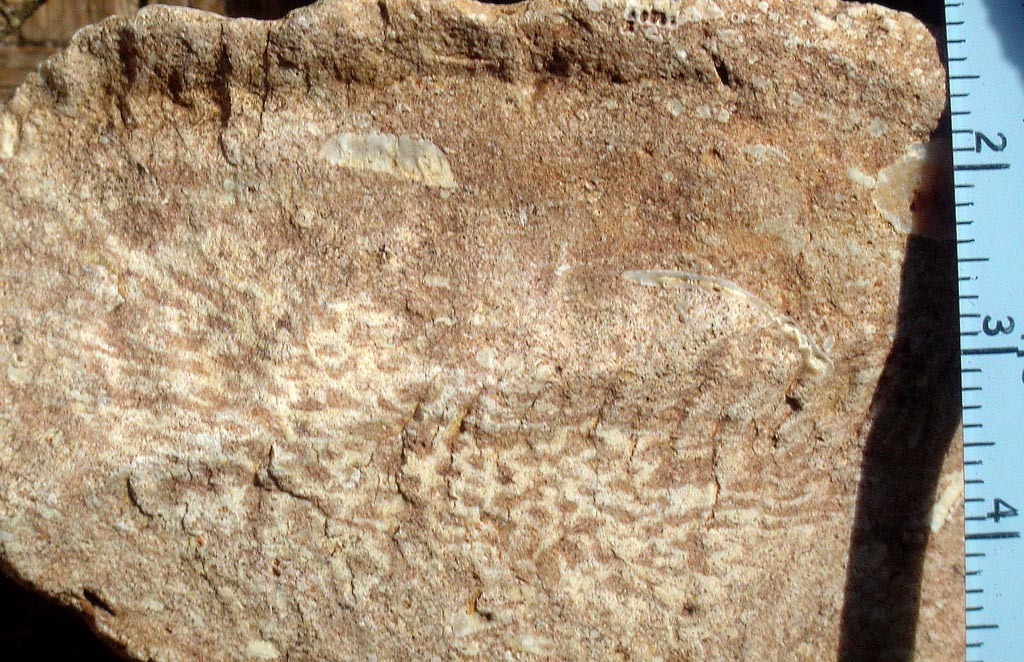
Crinoidal cherts
everywhere!
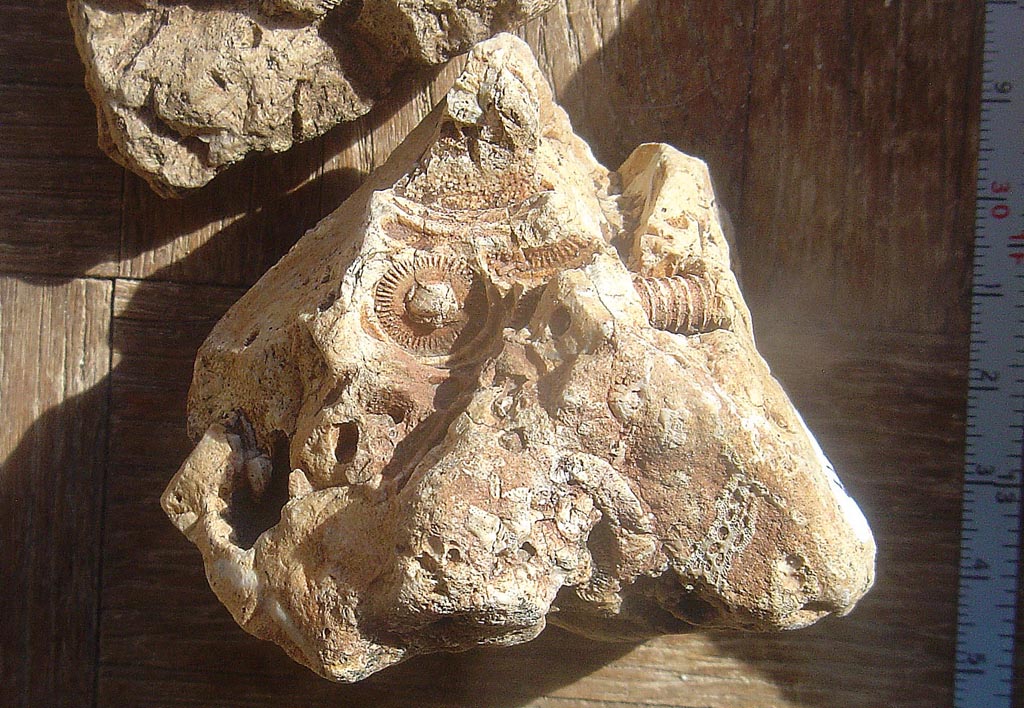
One single rugose
coral was found, this small horn coral was preserved in white
chert. She always finds the best stuff!
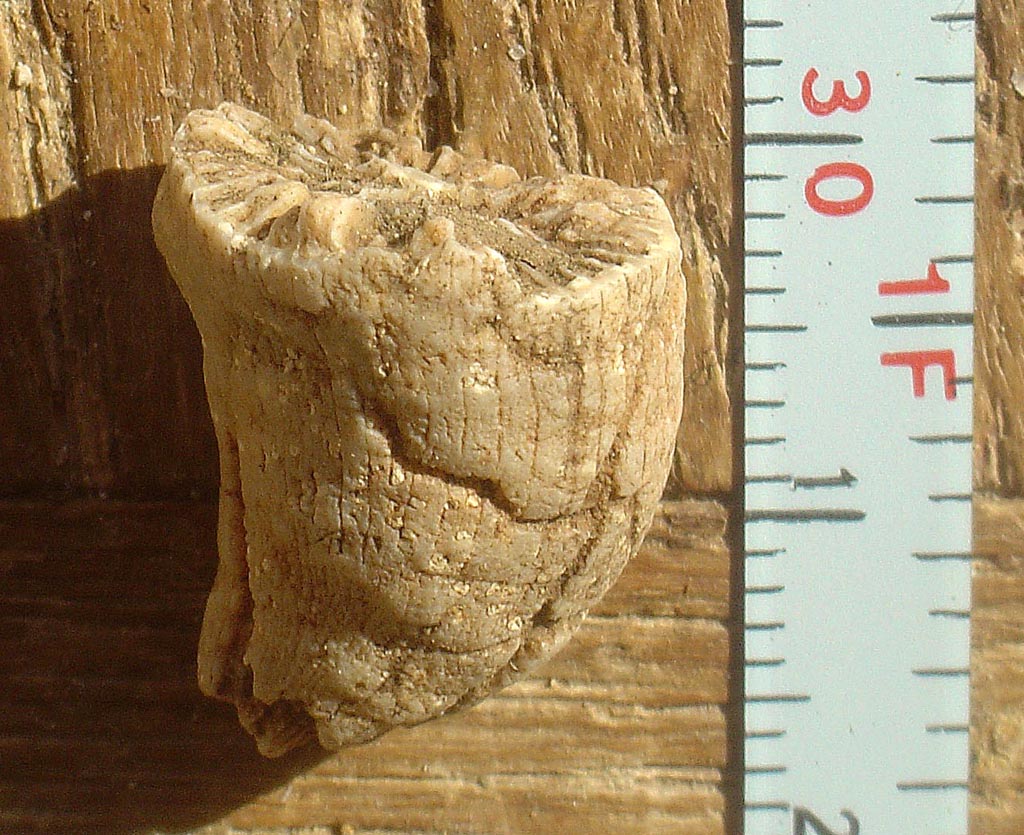
Tabulate branching
coral. This specimen which I found shows a cross section through
one branch, when the rock split in half. It is extrordiary under
the microscope, as you will see coming up!
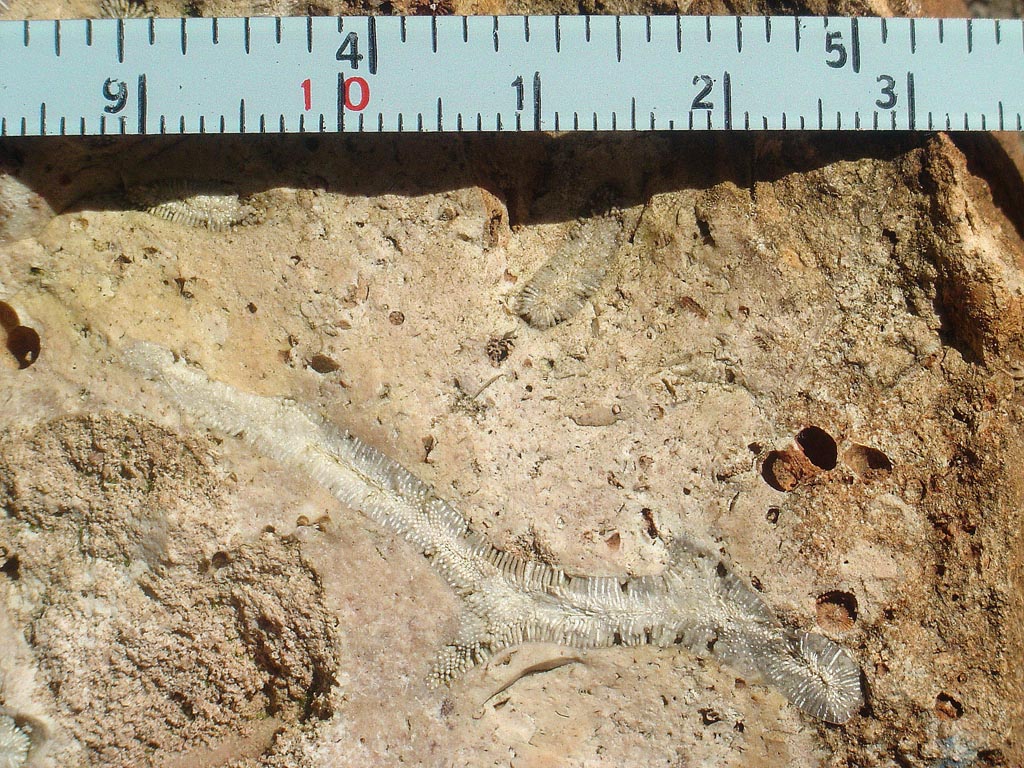
Here is another
branching coral that was not split open so you can see the exterior
appearance.
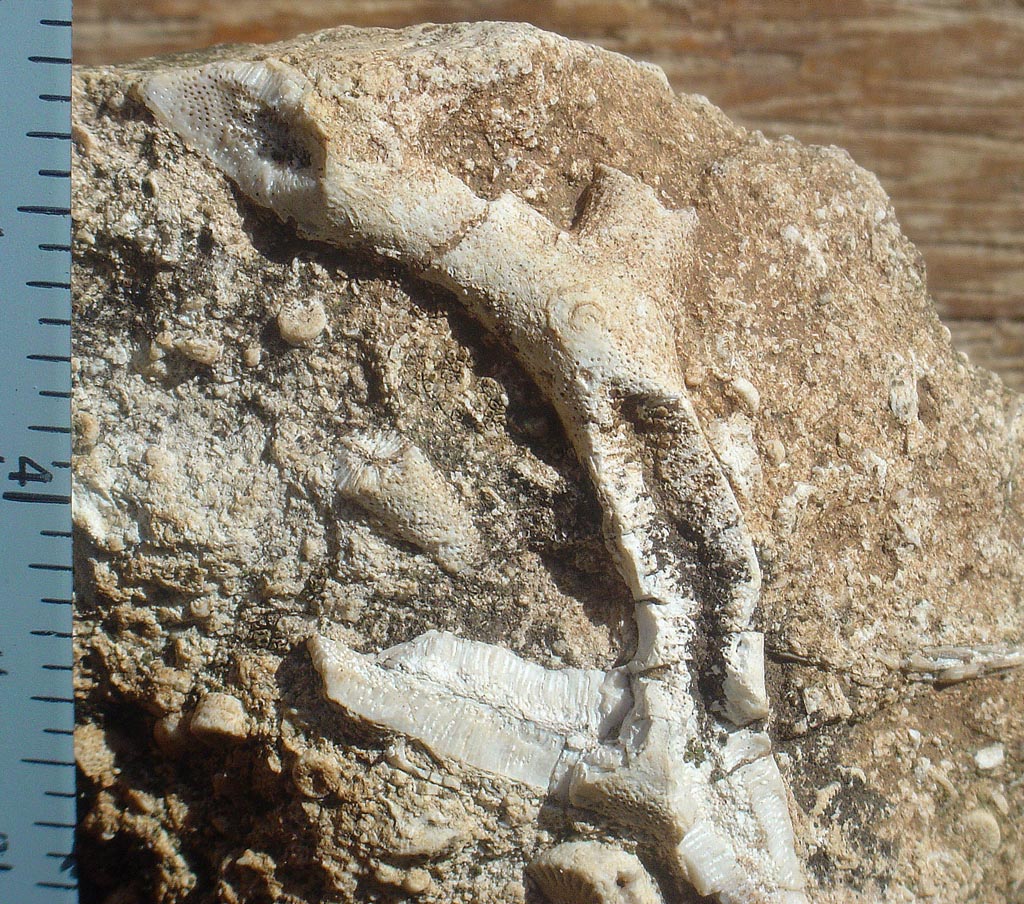
Microscope
shots of the Tabulate Coral
Look at the beautiful
tubes at 10x with my stereo microscope. Each tube held a small
colentrate which populated the surface of the coral tubes. It
is completely silicified and the outside of the tubes are covered
in tiny sparkling quartz crystals.
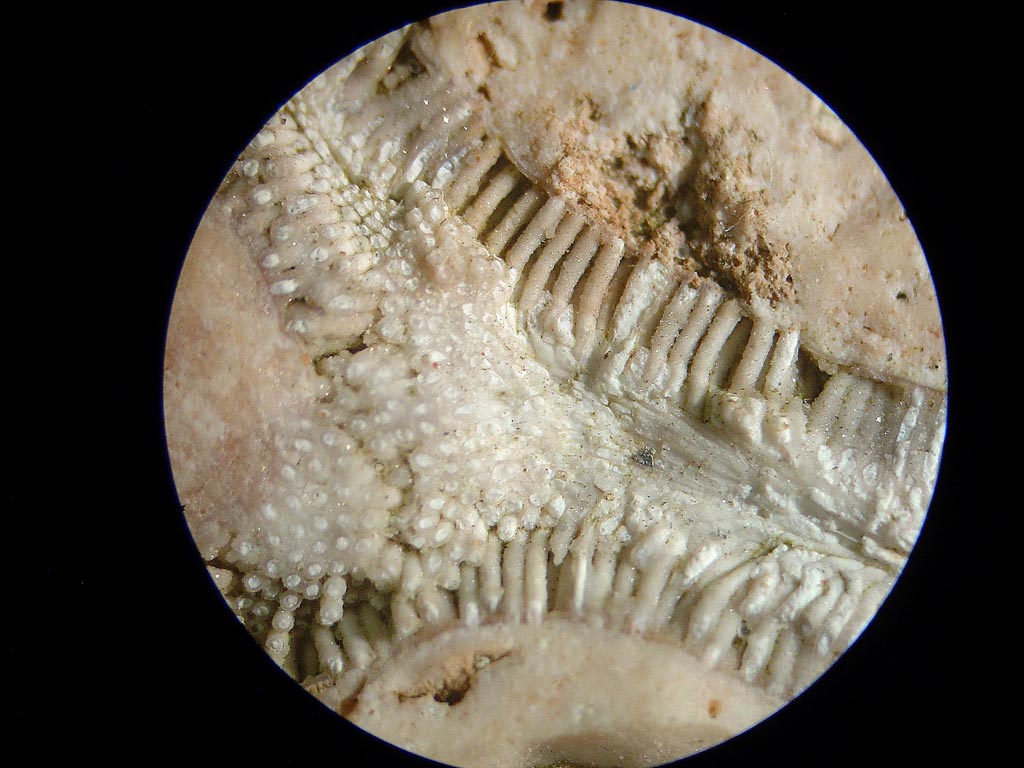
End on view of
the tubes at 10x. They are filled with a white chert, and show
no septa (partitions) and are typical of tabulate coral.
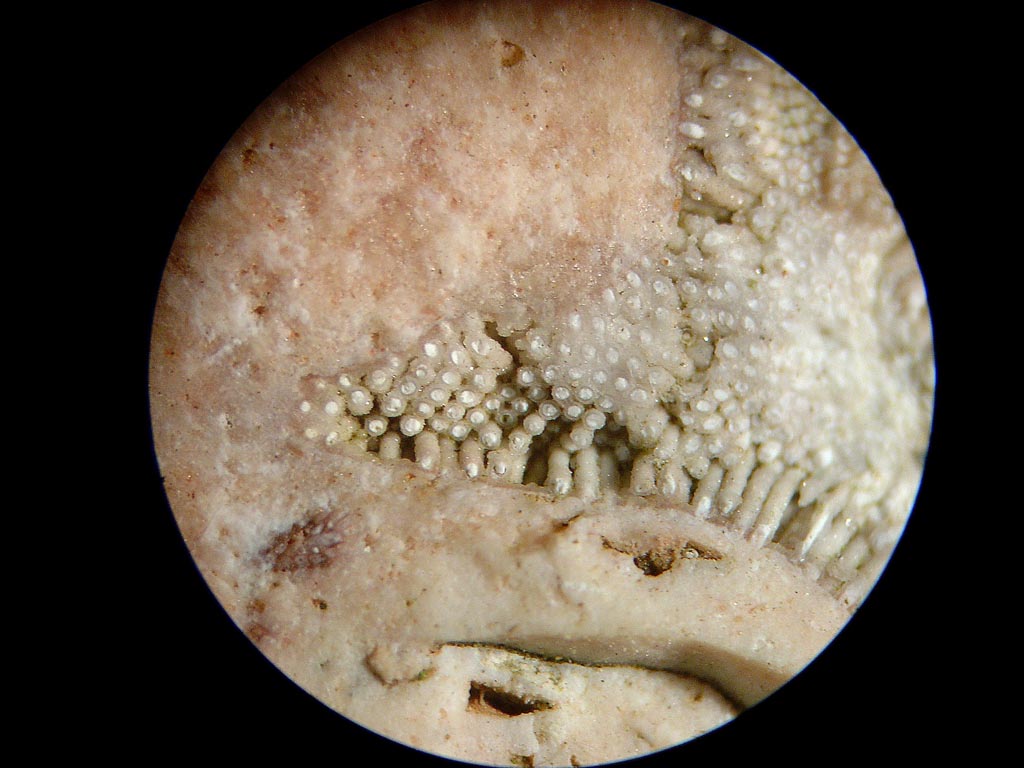
Final 10x shot,
the end of a branch with radiating channels.
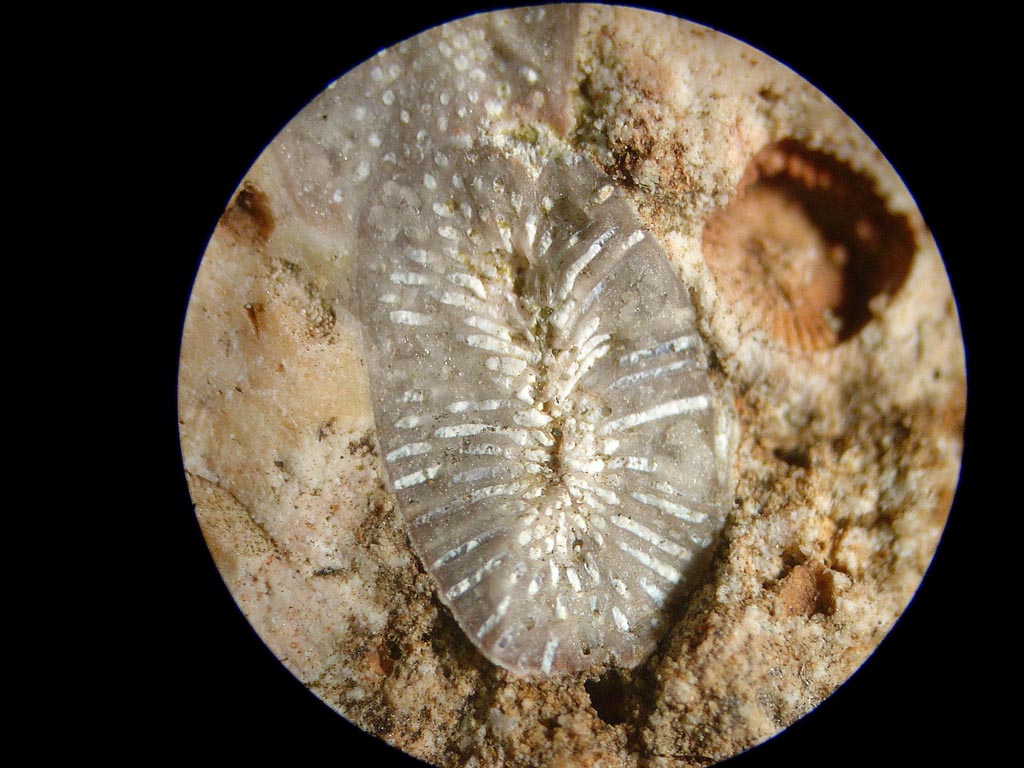
At a higher magnification
of 15x, the tubes are clearer. To take these images, a Sony point
and shoot digital camera was hand held up to the eyepiece and
it actually auto focused this way. See how sharp the field stop
is!
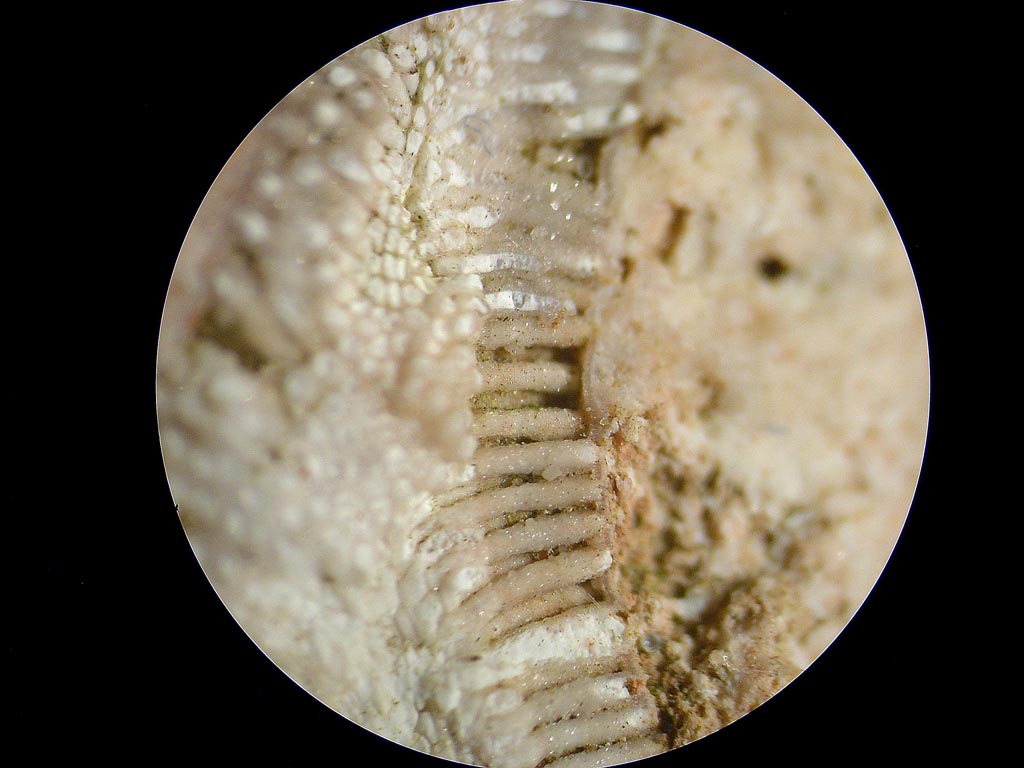
Ends of the tubes
at 15x.
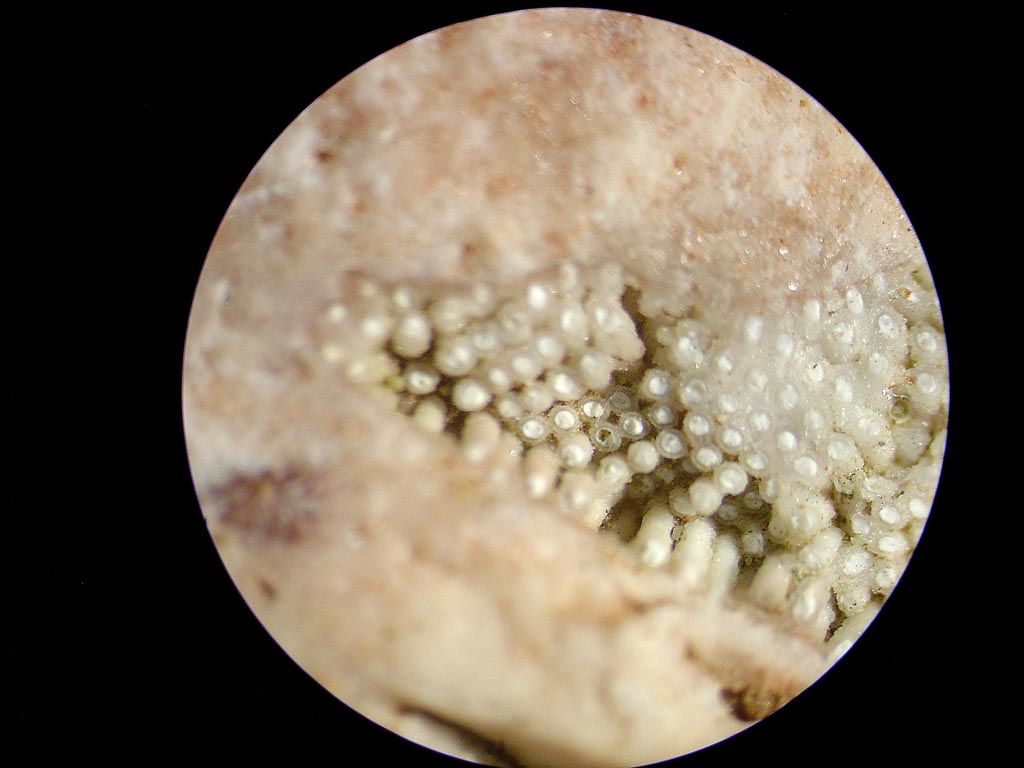
Finally, on the
way out of the back road we took to the site, and monsterous
California Condor was seen in a dead tree on the side of the
road, beckoning us to take its photo! I took this with my Canon
10D and 400mm IS lens. Is this not a face only a mother could
love?!
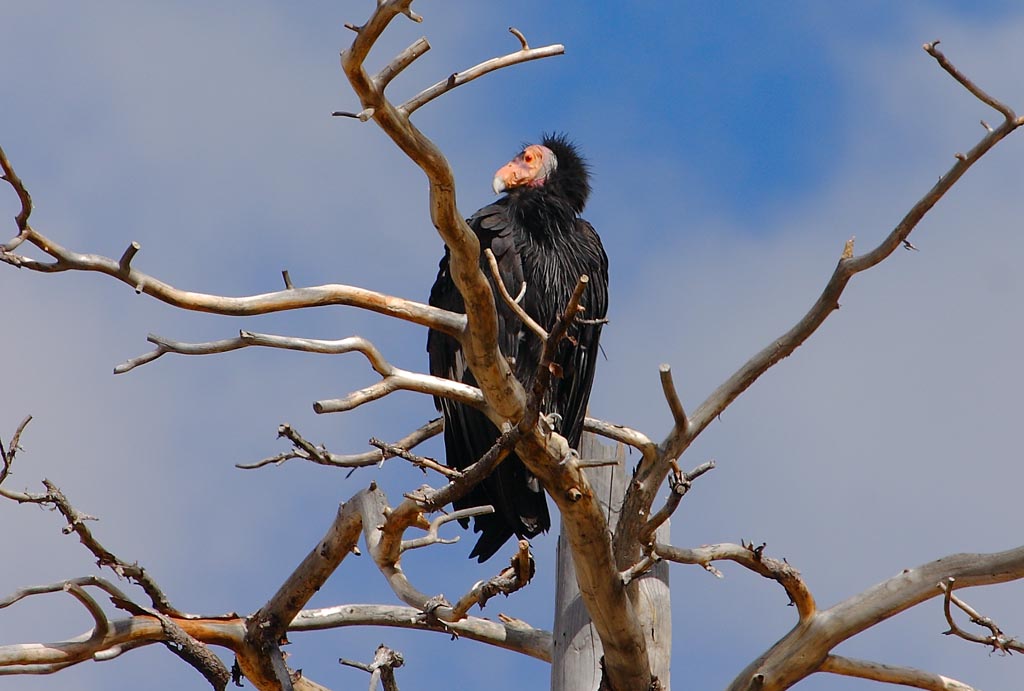
|